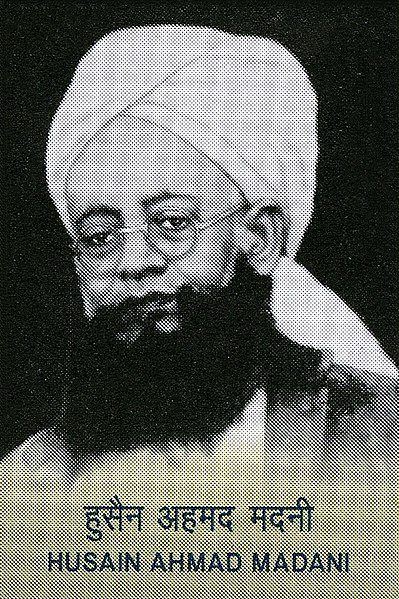Deobandi jihadism is a militant interpretation of Islam that draws upon the teachings of the Deobandi movement, which originated in the Indian subcontinent in the 19th century. The Deobandi movement underwent three waves of armed jihad. The first wave involved the establishment of an Islamic territory centered on Thana Bhawan by the movement's elders during the Indian Rebellion of 1857, before the founding of Darul Uloom Deoband. Imdadullah Muhajir Makki was the Amir al-Mu'minin of this Islamic territory. However, after the British defeated the Deobandi forces in the Battle of Shamli, the territory fell. Following the establishment of Darul Uloom Deoband, Mahmud Hasan Deobandi led the initiation of the second wave. He mobilized an armed resistance against the British through various initiatives, including the formation of the Samratut Tarbiat. When the British uncovered his Silk Letter Movement, they arrested him and held him captive in Malta. After his release, he and his disciples entered into mainstream politics and actively participated in the democratic process. In the late 1979, the Pakistan–Afghan border became the center of the Deobandi jihadist movement's third wave, which was fueled by the Soviet–Afghan War. Under the patronage of President Zia-ul-Haq, its expansion took place through various madrasas such as Darul Uloom Haqqania and Jamia Uloom-ul-Islamia. Jamiat Ulema-e-Islam (S) provided political support for it. Trained militants from the Pakistan–Afghan border participated in the Afghan jihad, and later went on to form various organizations, including the Taliban. The most successful example of Deobandi jihadism is the Taliban, who established Islamic rule in Afghanistan. The head of the Jamiat Ulema-e-Islam (S), Sami-ul-Haq, is referred to as the "father of the Taliban."

Image: Mahmud Hasan Deobandi (cropped)
Image: Sami ul Haq
Image: Jamia Haqqania
Taqi Usmani in Afghanistan, with Prime minister Hasan Akhund
The Deobandi movement or Deobandism is a revivalist movement within Sunni Islam that adheres to the Hanafi school of law. It formed in the late 19th century around the Darul Uloom Madrassa in Deoband, India, from which the name derives, by Muhammad Qasim Nanautavi, Rashid Ahmad Gangohi, and several others, after the Indian Rebellion of 1857–58. They opposed influence of non-Muslim cultures on the Muslim of South Asia. The movement pioneered education in religious sciences through the Dars-i-Nizami associated with the Lucknow-based ulama of Firangi Mahal with the goal of preserving traditional Islamic teachings from the influx of modernist, secular ideas during British colonial rule. The Deobandi movement's Indian clerical wing, Jamiat Ulema-e-Hind, was founded in 1919 and played a major role in the Indian independence movement through its participation in the Pan-Islamist Khilafat movement and propagation of the doctrine of composite nationalism.
Image: Darul Uloom Deoband
Image: Mahmud Hasan Deobandi (cropped)
Image: Hussain Ahmad Madani (cropped)
Image: Sabbir Ahmad Usmani (cropped)







